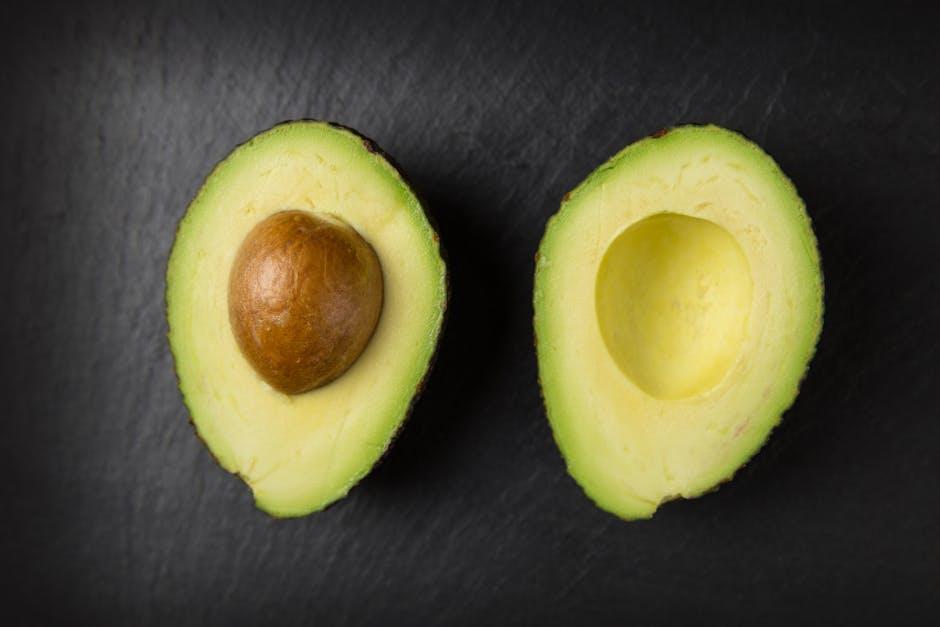In the pursuit of a balanced diet, the role of fats often sparks confusion and caution. Yet, when chosen wisely, healthy fats can be a powerful ally in achieving lasting satiety and overall wellness. This article will guide you through the essentials of incorporating healthy fats into your diet to enhance your feeling of fullness, boost your energy levels, and support your health goals. With clear insights and practical tips, you’ll gain the confidence to embrace these vital nutrients and transform your eating habits for the better. Let’s delve into the world of healthy fats and discover how they can help you achieve a more satisfying and nutritious lifestyle.
Understanding the Role of Healthy Fats in Appetite Control
Healthy fats play a pivotal role in managing hunger and enhancing satiety, making them an indispensable part of a balanced diet. When consumed, these fats trigger the release of hormones such as cholecystokinin (CCK) and peptide YY, which signal fullness to the brain, effectively reducing the urge to overeat. Incorporating these fats into meals not only prolongs the sensation of fullness but also stabilizes blood sugar levels, curbing sudden hunger pangs. Here’s how you can effectively integrate them into your daily routine:
- Start your day with a breakfast rich in omega-3 fatty acids, like a chia seed pudding or a smoothie with flaxseeds.
- Add a handful of nuts or seeds to your snacks to keep energy levels stable between meals.
- Use avocado or olive oil as a dressing for salads to enhance nutrient absorption and satiety.
- Include fatty fish such as salmon or mackerel in your weekly meal plan to benefit from their satiating effects.
By consciously choosing sources of healthy fats, you can harness their power to support appetite control and contribute to a more satisfying eating experience.

Incorporating Omega-3s and Monounsaturated Fats for Lasting Fullness
To harness the power of healthy fats for better satiety, it’s essential to include sources rich in omega-3 fatty acids and monounsaturated fats in your diet. These fats not only contribute to feeling fuller for longer but also support overall health and well-being. Omega-3s, found in foods like salmon, chia seeds, and walnuts, are known for their anti-inflammatory properties and ability to enhance brain function. Meanwhile, monounsaturated fats, prevalent in avocados, olive oil, and almonds, can help regulate blood sugar levels and reduce bad cholesterol.
- Salmon and Fatty Fish: Incorporate these into your meals twice a week to benefit from high omega-3 content.
- Chia Seeds: Add a tablespoon to your morning smoothie or yogurt for a nutritious boost.
- Walnuts: Snack on a handful to curb hunger between meals.
- Avocados: Use as a spread or topping to make your meals more satisfying.
- Olive Oil: Drizzle over salads or use in cooking for a heart-healthy fat source.
- Almonds: Keep a small pack in your bag for a quick, satisfying snack.
By consciously incorporating these healthy fats into your diet, you can enhance your sense of fullness, making it easier to manage your appetite and maintain a balanced diet. Remember, moderation is key, and these fats should complement a diverse and nutrient-rich meal plan.

Practical Tips for Balancing Fats with Other Nutrients
Achieving the perfect balance of fats with other nutrients can elevate your meals from simply satisfying to truly nourishing. Start by integrating healthy fats such as avocados, nuts, and olive oil into your meals. These not only provide essential fatty acids but also enhance the absorption of fat-soluble vitamins like A, D, E, and K. To ensure you’re not overdoing it, pair these fats with a variety of complex carbohydrates such as whole grains and legumes, which help maintain steady energy levels and prevent spikes in blood sugar.
- Prioritize whole foods: Choose foods in their natural form to maximize nutrient intake.
- Mind your portions: Use fats as a flavor enhancer, not the main component of your meal.
- Mix textures and flavors: Combine crunchy nuts with creamy avocados for a satisfying experience.
- Include lean proteins: Balance your plate with chicken, fish, or plant-based proteins to complete your meal.
Experiment with different combinations to find what works best for your taste and nutritional needs. By doing so, you’ll create meals that are not only delicious and filling but also aligned with your health goals.

Choosing the Best Sources of Healthy Fats for Your Diet
When aiming to enhance satiety with healthy fats, it’s crucial to select sources that not only provide essential nutrients but also fit seamlessly into your lifestyle. Here are some of the best options to consider:
- Avocados: Rich in monounsaturated fats, avocados are a versatile choice that can be added to salads, smoothies, or enjoyed on their own. Their creamy texture and subtle flavor make them a delightful addition to any meal.
- Nuts and Seeds: Almonds, walnuts, chia seeds, and flaxseeds are excellent sources of omega-3 fatty acids and fiber. A handful of these can be a satisfying snack or a crunchy topping for yogurt or oatmeal.
- Olive Oil: Known for its heart-healthy properties, olive oil is perfect for drizzling over salads or vegetables. Opt for extra virgin varieties for the most antioxidants and flavor.
- Fatty Fish: Salmon, mackerel, and sardines are packed with omega-3s and provide high-quality protein. Aim to include these in your diet a few times a week for optimal benefits.
- Coconut Oil: With its unique medium-chain triglycerides, coconut oil is a great option for cooking at higher temperatures. It can add a subtle sweetness to dishes, enhancing flavor while keeping you full.
Incorporating these fats into your meals can not only increase satiety but also contribute to a balanced and nutritious diet. Be mindful of portion sizes to ensure you’re getting the benefits without overconsuming calories.
